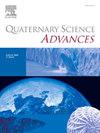伊比利亚中部旧石器时代早期晚期的生存策略:来自Abrigo de la Malia的证据
IF 2.2
Q2 GEOGRAPHY, PHYSICAL
引用次数: 0
摘要
关于伊比利亚半岛内部早期解剖学意义上的现代人定居点的知识仍然有限。长期以来,传统观点一直认为,这个被称为伊比利亚高原的地区在尼安德特人消失后被遗弃,直到末次冰期结束,大部分地区都无人居住。相比之下,沿海地区迄今为止一直是考古研究的主要焦点,因为它们是大多数已知遗址所在的地方,也是对生存实践进行最多研究的地方。最近发现的Abrigo de la Malia岩石掩体遗址(Tamajón, Guadalajara)挑战了这一范式,提供了在Aurignacian和Gravettian时期(36,200-26,260 cal BP)在伊比利亚中部占领的证据。本研究的重点是对来自玛利亚岩石掩体的旧石器时代动物群进行动物考古学和地学分析,旨在重建旧石器时代早期居住在伊比利亚中部的最早的解剖学上的现代人的生存策略。研究结果表明,人类活动主要集中在对大中型有蹄类动物的加工上,肉食动物的加工则处于次要地位。综合数据表明,马莉娅岩石避难所被用于短期但经常性的活动,可能是从事狩猎探险的小团体。这项研究强调了在MIS-3期间居住在该地区的这些人群在利用现有环境资源的同时面临严峻的气候条件的适应性。本文章由计算机程序翻译,如有差异,请以英文原文为准。
Subsistence strategies in the early upper Paleolithic of central Iberia: Evidence from Abrigo de la Malia
Knowledge of early Anatomically Modern Humans settlements in the interior of the Iberian Peninsula remains limited. Traditional perspectives have long assumed that this region, known as the Iberian Plateau, was abandoned after the disappearance of Neanderthals and remained largely uninhabited until the end of the Last Glacial. In contrast, coastal areas have so far been the primary focus of archeological studies, as they are where the majority of known sites are located and where the most research has been conducted on subsistence practices. The recent discovery of the Abrigo de la Malia rock shelter site (Tamajón, Guadalajara) has challenged this paradigm, providing evidence of occupation in Central Iberia during the Aurignacian and Gravettian periods (36,200–26,260 cal BP). This work is focused on the zooarcheological and taphonomic analysis of the Paleolithic faunal assemblage from the Malia rock shelter, aiming to reconstruct the subsistence strategies of the earliest Anatomically Modern Humans inhabiting central Iberia during the early Upper Paleolithic. The results indicate anthropogenic activities focused on the processing of medium- and large-sized ungulates, with carnivores either playing a marginal role. The combined data suggest that the Malia rock shelter was used for short but recurrent occupations, likely by small groups engaged in hunting expeditions. This study highlights the adaptability of these populations who inhabited this region during MIS-3 as they faced severe climatic conditions while exploiting the available environmental resources.
求助全文
通过发布文献求助,成功后即可免费获取论文全文。
去求助
来源期刊

Quaternary Science Advances
Earth and Planetary Sciences-Earth-Surface Processes
CiteScore
4.00
自引率
13.30%
发文量
16
审稿时长
61 days
 求助内容:
求助内容: 应助结果提醒方式:
应助结果提醒方式:


